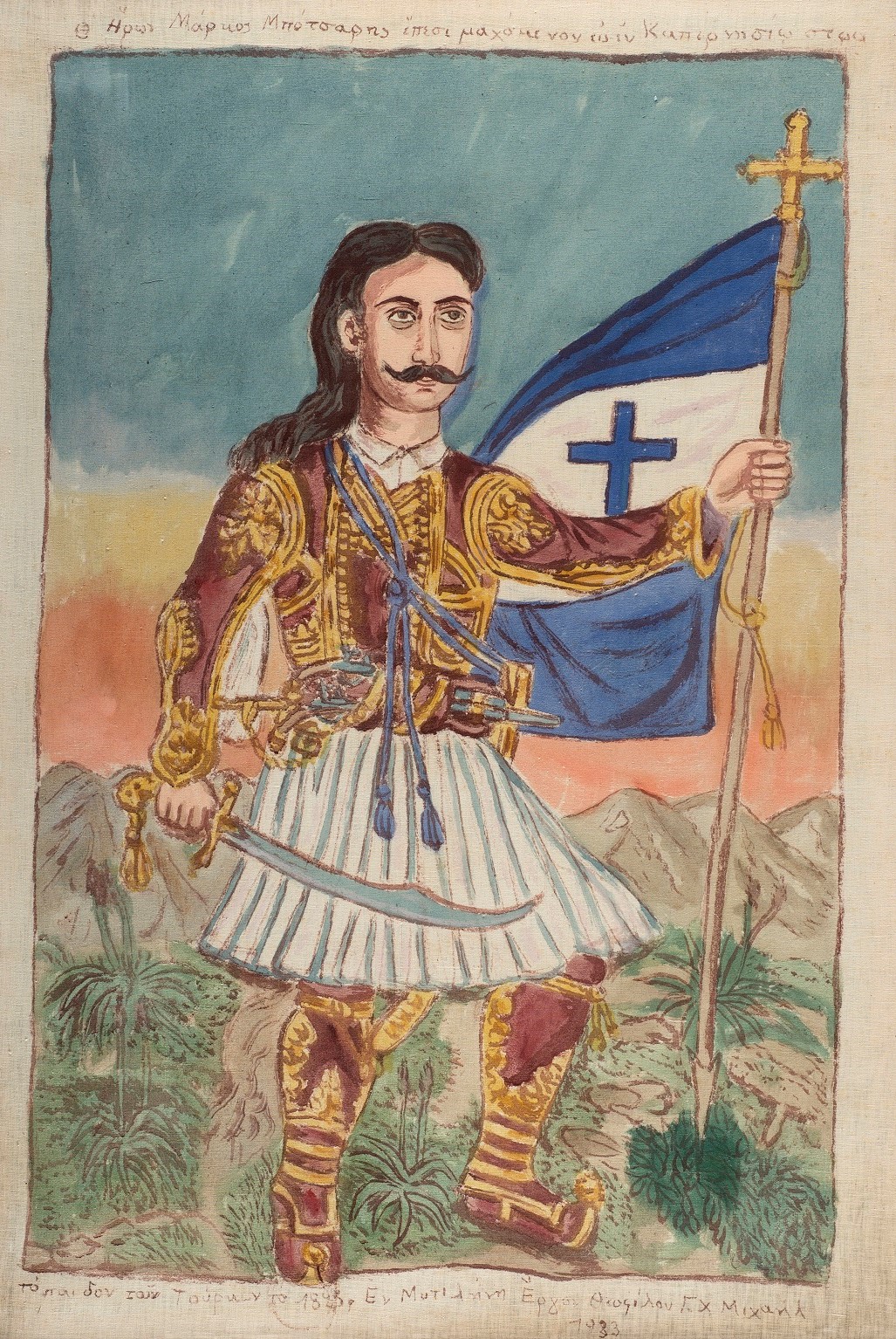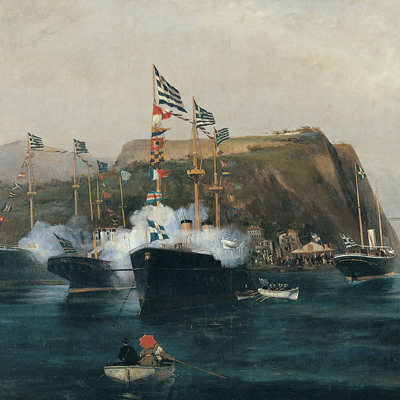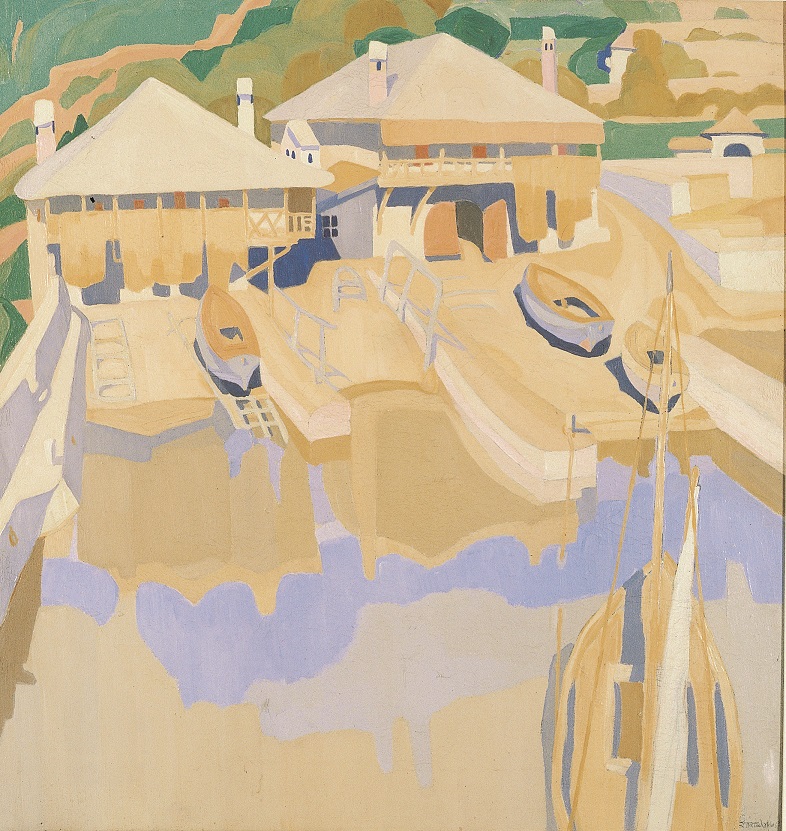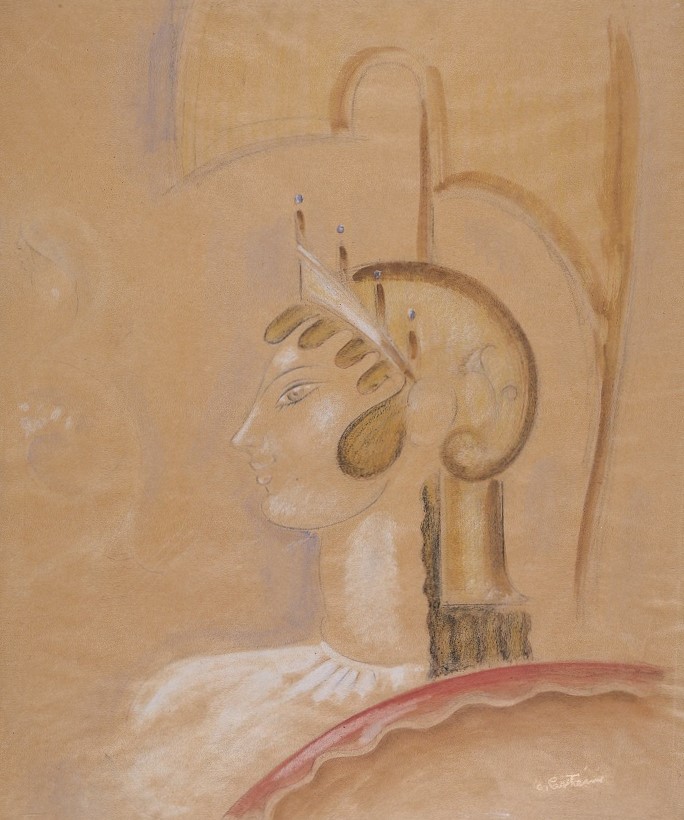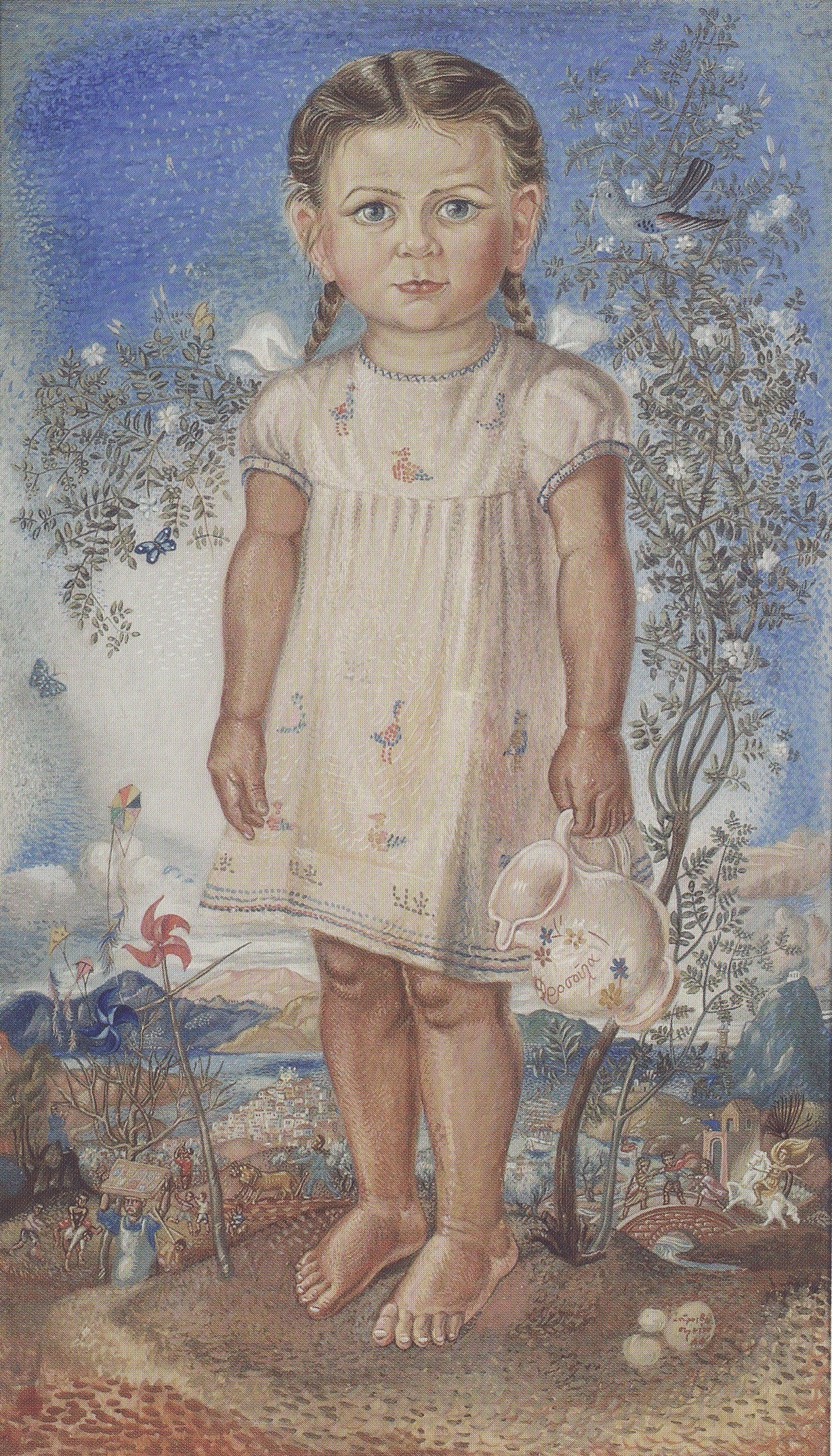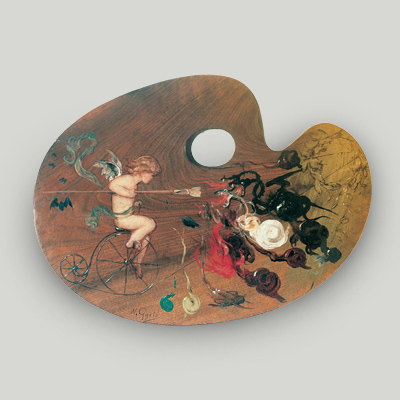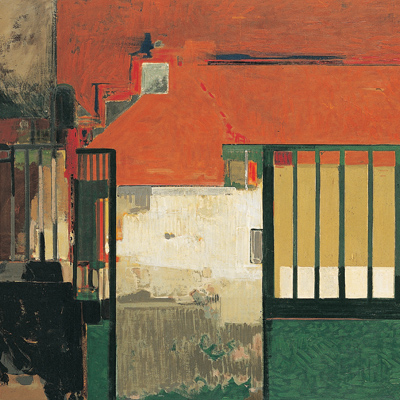Theophilos, The Hero Markos Botsaris
The Hero Markos Botsaris is a piece by the renowned self-taught painter Theophilos. The painting is part of a large collection of works that he completed during the last 3 years of his life. Theophilos was very fond of themes related to the Greek Revolution of 1821. He is considered a naïve art painter and his work has significantly influenced the Generation of the 30s.
The full title of the painting
The following title appears in the margin of the painting, at the top and bottom:
“The Hero Markos Botsaris fell in battle at the Turkish camp of Karpenisi in 1823. Painting in Mytilene by Theophilos G.C. Michael 1933.”
The hero’s representation
Markos Botsaris dons a gold-threaded uniform. The warrior is calm and collected. He holds the khanjar sword in his right hand and has a pistol tacked in his sash. In his left hand he holds the Greek flag, as seen during the Revolution era: white with a blue cross in the middle.
The background surrounding the hero is a well-drawn landscape. At the bottom of the composition there is vegetation, rocks, a path and the mountains. At the top there is the sky, painted in 3 colours, framing Botsaris and highlighting his figure and movement.
Iconographic model
The representation of Markos Botsaris reproduces the famous composition by Peter von Hess (1792-1871), which depicts Panayiotis Kefalas raising the freedom flag at the walls of Tripolitsa.
The German painter was famous for capturing historical moments of the Greek Revolution of 1821.
The Hero Markos Botsaris is part of a large collection of works that Theophilos completed during the last 3 years of his life.
His life in a nutshell
Theophilos Chatzimichael (1871-1934) was born on the island of Lesvos. He was self-taught.
In 1883 he left his homeland and moved to Smyrna. He stayed there until the start of the Greco-Turkish war in 1897, in which he fought.
He then settled in Pelion. In 1926 we returned to Lesvos.
Naïve painting
Theophilos’ painting is free from the strict rules of the 19th century academic tradition. It is typified by unprecedented, candid emotionality, which brings naïve painters to mind.
Naïve painting is characterised by childlike simplicity in the choice of materials, and the choice of themes and techniques. The term “naïve” comes from French. Quite often, naïve artists are self-taught, without official training.
Favourite themes
Theophilos’ paintings are based on religious and nationalistic themes from the Greek history. He was particularly fond of subjects and portraits from the Revolution of 1821.
His also drew inspiration from other sources: folk art lithographs, postcards of his time, advertisements and illustrations.
Recognised with the help of Tériade
In his final years, Theophilos met art critic Stratis Eleftheriades-Tériade (1897-1983), who lived in France. This acquaintance was pivotal in getting his work recognised.
Tériade, who also came from Lesvos, made sure that the artist had enough to live on and paint undistracted. The financial aid that he offered gave Theophilos the peace and quiet to paint more than 120 pieces in approximately 6 years.
These paintings were exhibited at the Louvre Museum in Paris in 1936. They were greatly admired and recognised by the public as samples of work by a Greek folk painter. Unfortunately, Theophilos did not live long enough to enjoy this recognition.
His influence on the Generation of the 30s
Theophilos’ work had a strong impact on the aesthetics and artistic style of the painters who formed the so-called Generation of the 30s. The renowned painters Photis Kontoglou and Yannis Tsarouchis were part of that generation.
The art of the interwar period was marked by a return to tradition. Following the traumatic events of the Greco-Turkish War (1919–1922) and the burning of Smyrna, the Generation of the 30s took a conscious turn towards Greekness.
National self-assurance was necessary. So, Theophilos’ Greek and unadulterated painting found its place among this artistic generation.
An important asset
The Hero Markos Botsaris by Theophilos is part of the Alpha Bank Art Collection.
In the past, it belonged to the art collection of the former Commercial Bank.
The work of art in our publications
The Hero Markos Botsaris by Theophilos is referenced in the catalogue of the exhibition “1821 Before and After”, in honour of the 200-year anniversary from the Revolution of 1821. The exhibition was hosted by the Benaki Museum, in partnership with the Bank of Greece, the National Bank and Alpha Bank.
The Alpha Bank Art Collection is not open to the public.
Research visits to the Art Collection can be organised upon request.
Contact us to book your visit.
